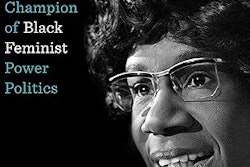Originally from Washington, D.C., Dr. DeLeon Gray attended an elementary school on Howard University’s campus, which allowed him to see what community engagement looked like up close.
“Engaging with college students was regular from early on,” says Gray. “When I went to other spaces and started thinking about my work, community engagement just seemed so natural to me.”
 Dr. DeLeon Gray
Dr. DeLeon Gray
“They make all kinds of videos, mixtapes, and songs,” he says. “It’s scholarship in a different form.”
Black and Belonging serves students, ages 12-18, specifically emphasizing those who attend predominantly Black K-12 public schools. To date, Gray has mentored over 100 students through Black and Belonging in Durham Public Schools. Gray began his academic career studying motivation in graduate school at The Ohio State University. While completing his dissertation as a graduate student, he developed a framework for understanding identity and its relationship to school belonging.
In 2018, Gray and his colleagues won the Best Article Award for a publication in Educational Psychologist, titled “Black and Belonging at School: A Case for Interpersonal, Instructional, and Institutional Opportunity Structures.” The groundbreaking piece would eventually gain national traction, including being picked up by the Bill and Melinda Gates Foundation. Gray says he felt pressure to produce another article when a friend came to him and said that the idea was not done because the scholarship was just one leg of the relay. His friend advised him to show people what “Black and belonging” looked like.
“During the pandemic, I started to build out tools, engage educators in belonging working groups, and then when school opened back up, they invited me in to work with students during that quiet year and co-construct with them,” says Gray.
For Gray, rooting his work locally was antithetical to everything he learned as an educational psychology researcher. He decided to do it anyway.
“From the more localized view, I’ve learned how to serve students that go to urban and predominantly Black and Latino schools,” he says. “These schools feel like home to me.”
Gray began conducting youth programs when he arrived at North Carolina State as a professor in 2012. One of the first programs he developed, iScholar, is an afterschool program that gives high school students the opportunity to collaborate on meaningful projects and speak to issues they identify with within their own communities.
“I knew that at a research university, research could get students in doors that their grades and test scores could not,” says Gray. “I thought research could help write their tickets to other places.”
However, according to Gray, the interest was not always there for the students. “Something was missing from the equation,” he says. “I had to start earlier, so I started in middle schools working with students on different projects.”
Today, Gray is in the classroom with students for at least 10 hours each week. His goal is to put students in places where they are excluded or should be included, whether running the Black History programs or creating their own e-courses that are creative expressions of what belonging means to them.
“I have learned a lot about community engagement in the different forms that it has taken over the years, even the failures of when I first started thinking what it was supposed to look like,” he says. “I had to de-center my research a little bit in order to get it to pop.”
Everything Gray does with Black and Belonging is co-constructed with youth, including hosting cultural events, preparing teacher workshops, and presenting at research conferences.
“We’re talking about youth all the time at these conferences; why wouldn’t they be there?” Gray asks.
Gray is also codesigning lapel pins with his mentees and selling them to raise money for their attendance at the annual meeting of the American Educational Research Association (AERA). This year, Gray has a presidential session on “A Cocurricular Model for Supporting the Next Generation of Equity-Focused Educational Psychologists.” He says he wants his mentees and their families to be there with him.
“The forum may look different, but at the end of the day, the goal is to armor students with what they need to know that they are worthy of demanding their belonging in society both intellectually and creatively,” he says. “Also, the goal is for us as adults to kick down doors for them so they can have a say in the environments they deserve to be in.”
Gray says he believes that just encouraging students to be changemakers is not enough.“How will they know how to do this if they don’t get their reps in?” he asks.
Gray’s dream is to exceed what he can think of or imagine and maintain his health and the momentum of his community-engaged work long enough for his mentees to grow up and pour into his son just as he and his team have poured into them.




















